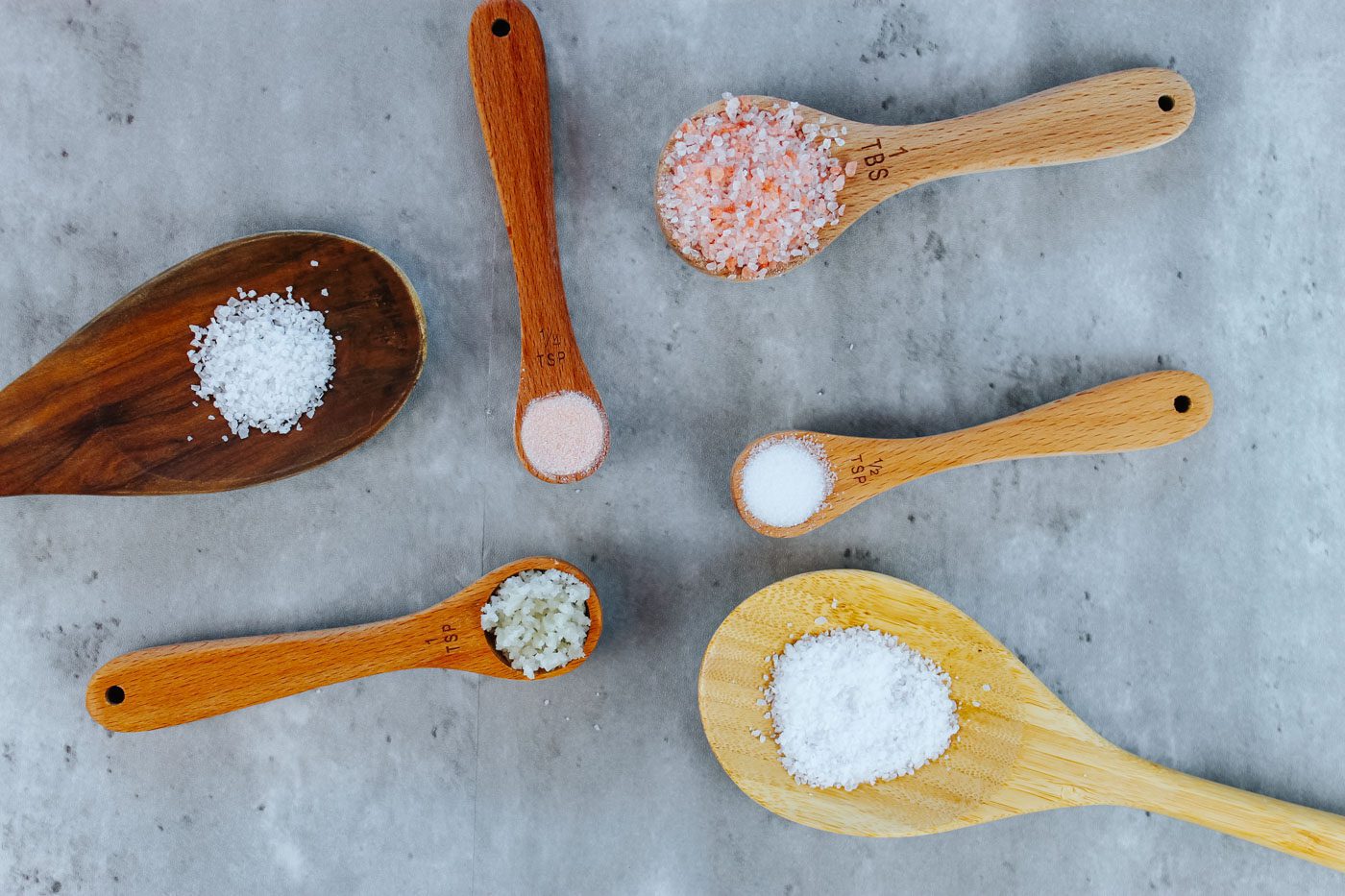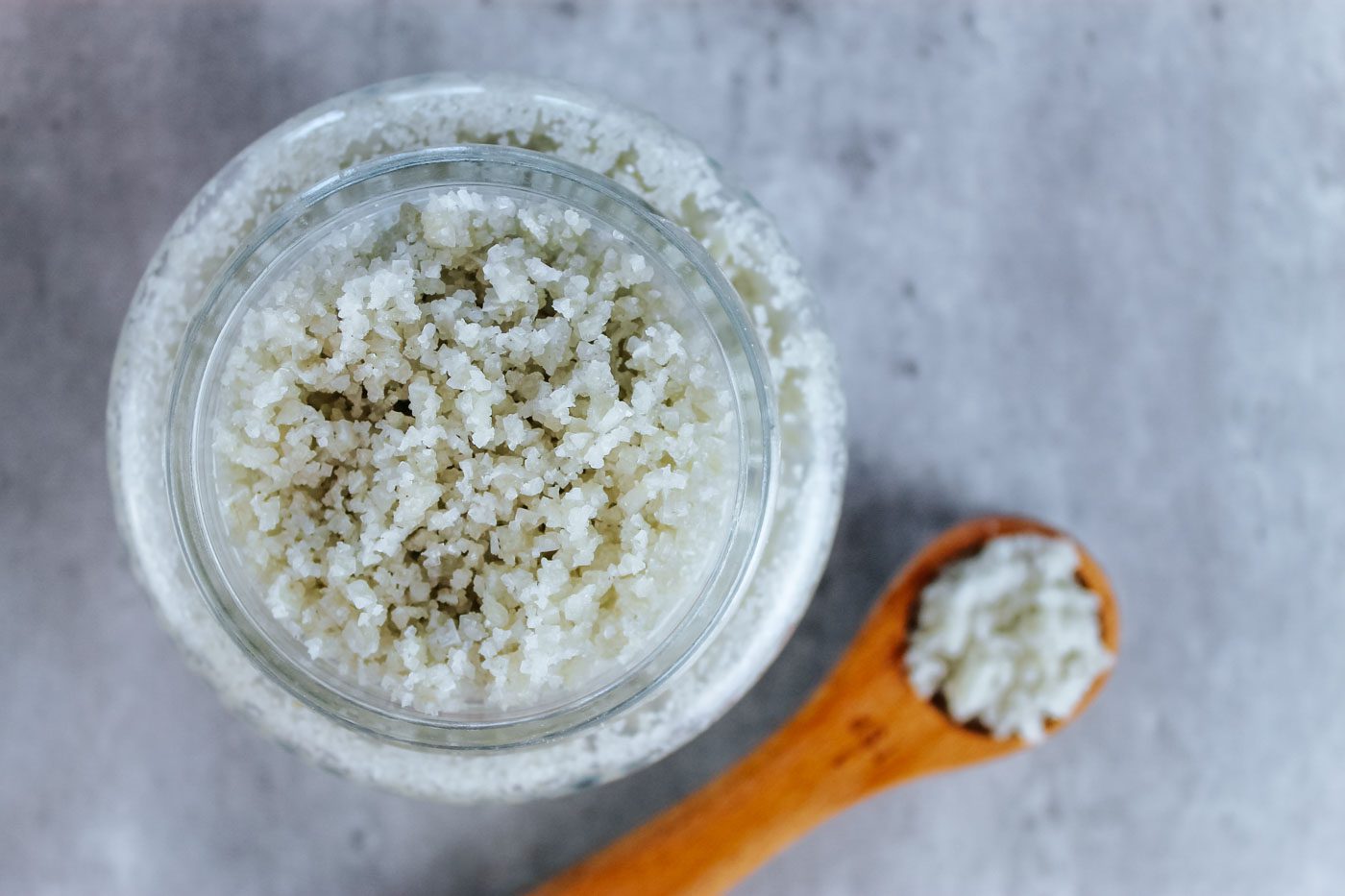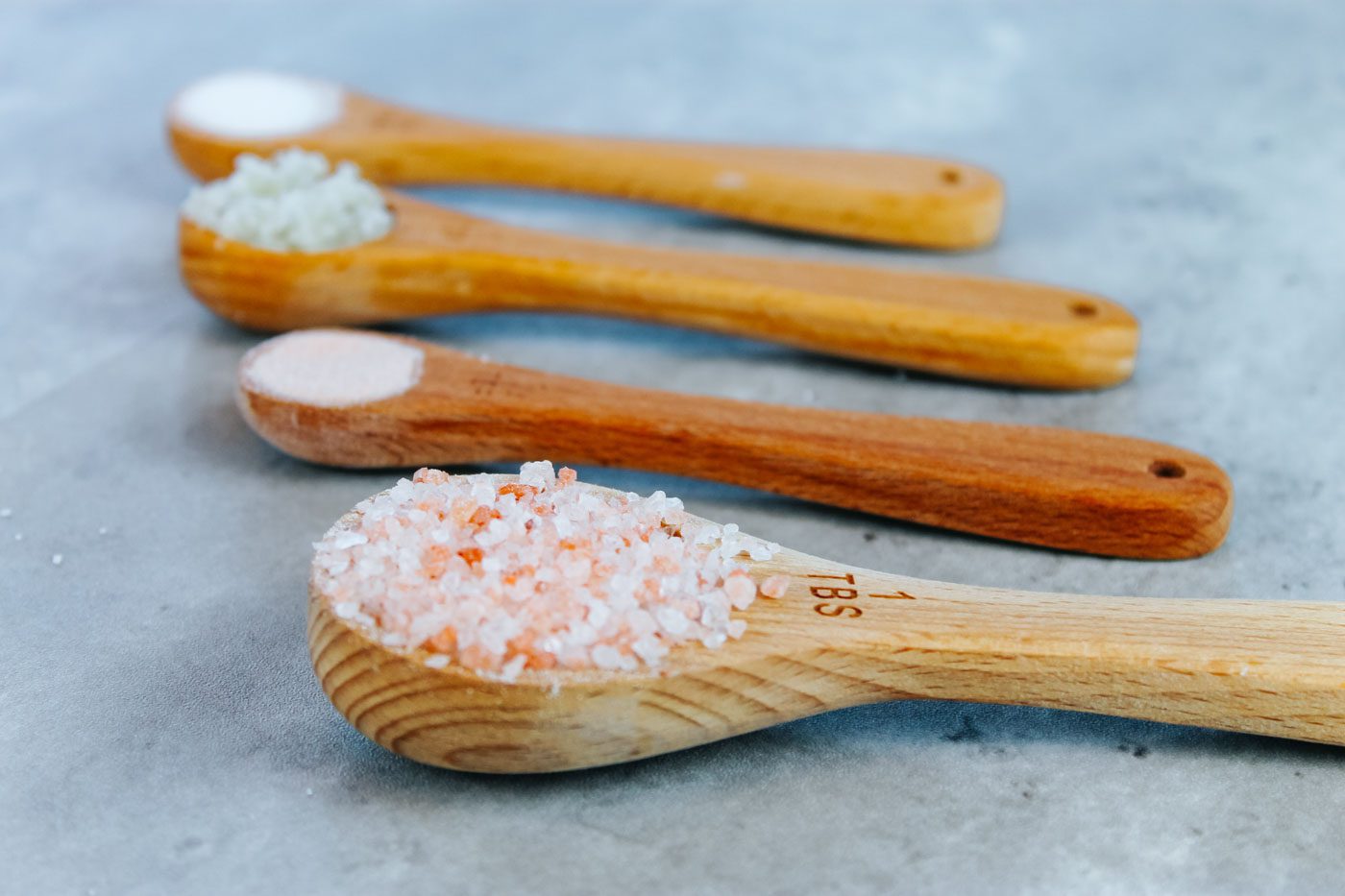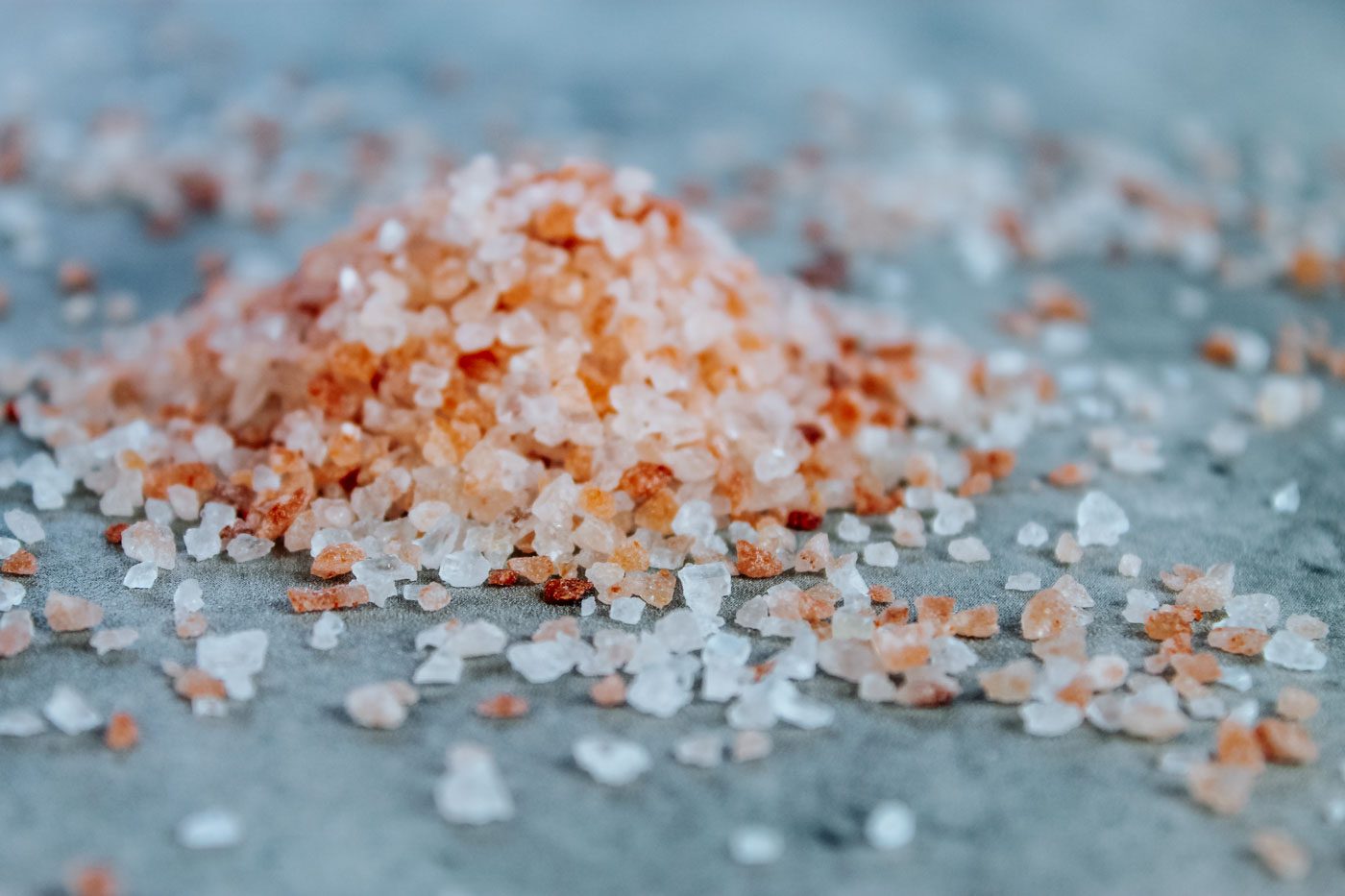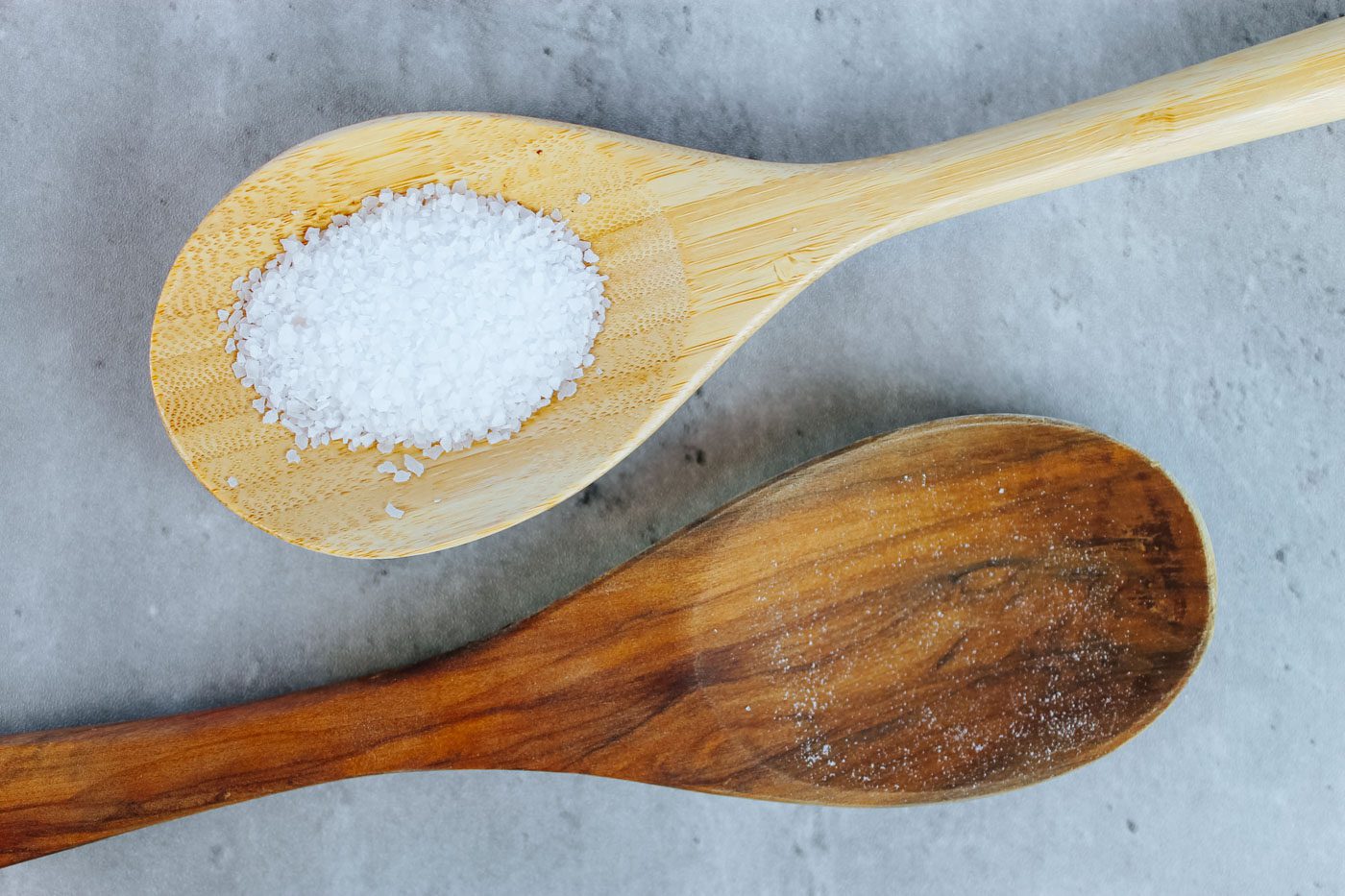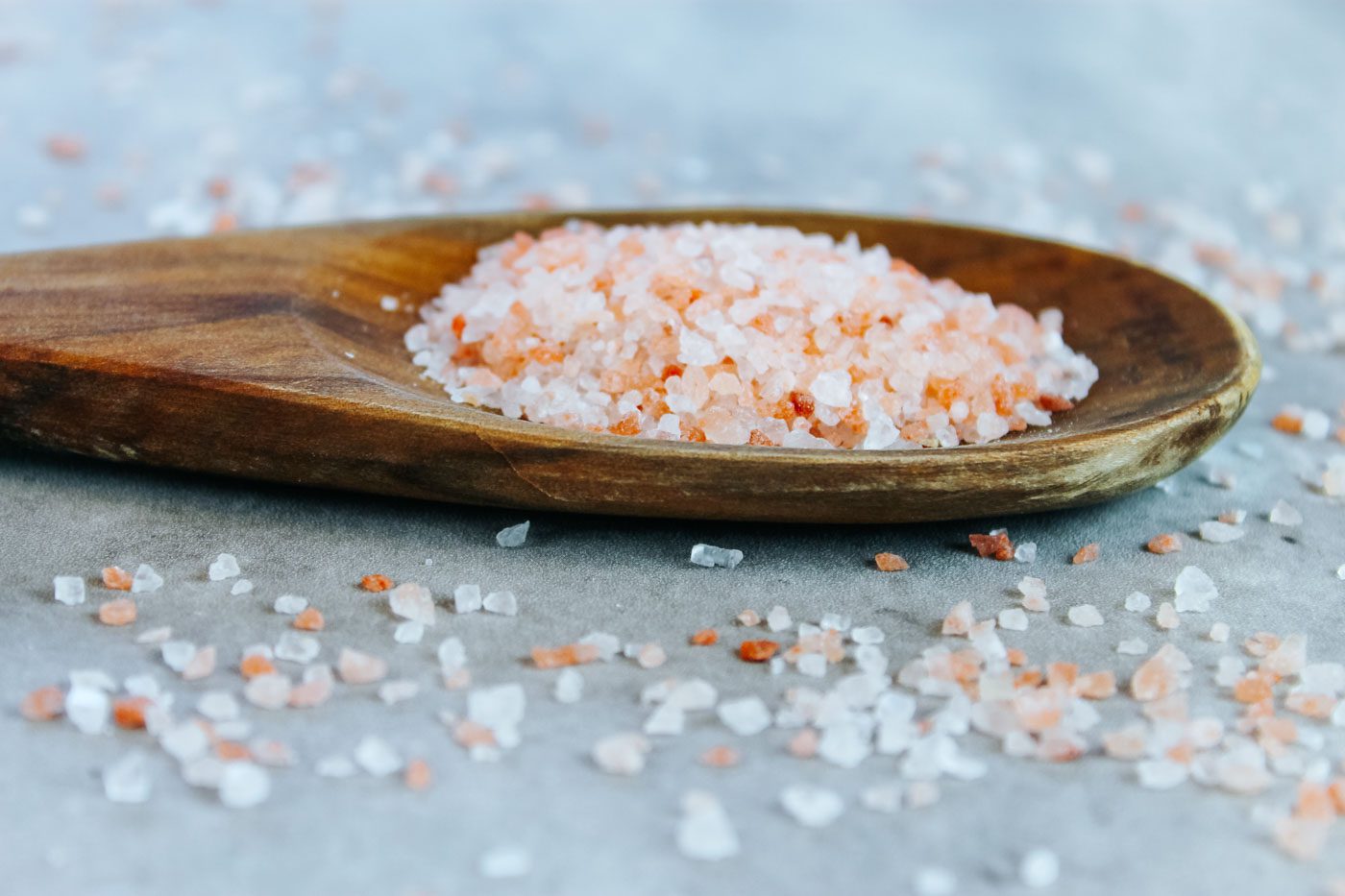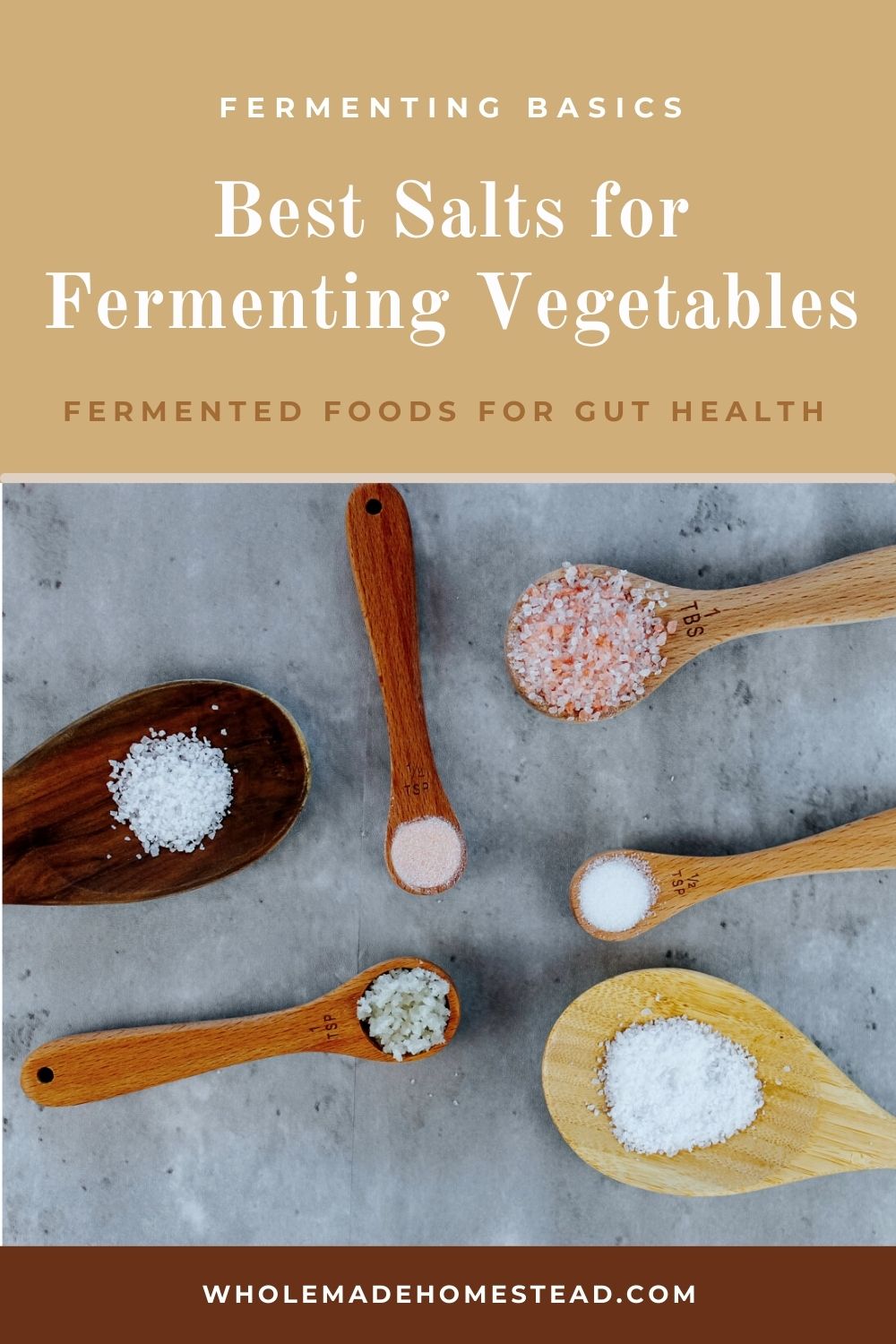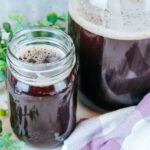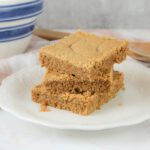When it comes to fermenting vegetables salt is a necessary ingredient to create a successful ferment. With so many salt choices available, you may wonder what is the best salt for fermenting? In this guide, you’ll learn why not all salts are the same, which ones to use as well as a few salts to avoid.
This post contains affiliate links, which means I make a small commission at no extra cost to you. In any case, I only link to products we actually use on our homestead and that I believe can truly benefit to you. See my full disclosure here.
Canning. Dehydrating. Freezing. Freeze drying. These are all excellent and often well-known ways to preserve food on the homestead.
But one method, fermentation, is commonly deemed as mysterious and strange. Especially for those who are used to eating the standard American diet.
But believe it or not, fermentation is easy to do and is considered one of the oldest and safest preservation methods.
For most vegetable fermentation recipes, all you need is 3 ingredients — a vegetable, water and salt. In fact, when it comes to making homemade sauerkraut, you need even less, just one head of cabbage and a tablespoon of salt. It’s really that simple.
Choosing quality ingredients is important when fermenting. Select only organic vegetables or fruits. Or better yet, grab some from your backyard garden. Use non chlorinated water, either filtered from something like a Berkey or find yourself a jug of spring water.
But what about the salt? What variety works best? In this guide, I’ll share with you the best salt for lacto-fermentation, the benefits of mineral-rich salts and answer some common questions when it comes fermenting at home.
Is Salt Good for You?
You may have heard the phrase “hold the salt”, implying that salt is bad for you. But this couldn’t be further from the truth. Your body needs salt to survive. Without a healthy amount of salt, you won’t live long. The saying “hold the salt” was most likely created due to the high amount of sodium in processed foods. In the processed food industry, refined salt is used to flavor, enhance sweetness and preserve shelf life.
When salt is used properly, in recipes made from scratch, using nutrient dense ingredients, salt content is fairly low. Plus if you use a natural, mineral-rich salt when cooking, baking or fermenting you receive all of the vital health benefits that your body needs in order to function well. In short, real salt, in moderation is good for you.
What is the Purpose of Salt in Fermented Vegetables?
The primary purpose of salt in fermentation is preservation. By adding a little salt with your chosen vegetable you can extend the length of its life as well as increase the nutrients in the vegetable.
Salt first works to draw out the liquid (or juices) from the vegetable. This is called a brine, which is crucial to the success of vegetable fermentation. Once the salt water brine has been created, the vegetable can be submerged into the liquid, creating an anaerobic environment. The good bacteria will thrive while the bad bacteria and yeasts that need oxygen to survive will perish.
What is the Best Salt for Fermentation?
There are a variety of salts available to purchase these days. But not all of them are acceptable to use to ferment vegetables. Natural, unrefined salt is best for vegetable fermentation, especially when it contains vitamins and minerals. Here are 3 of the best salts for fermenting.
Best Salts for Fermenting
Sea Salt
Sea salt is probably one of the most popular salts to use for cooking, baking and fermenting. This type of salt comes from the sea and is produced in two forms, refined and unrefined. Using an evaporation method the water is removed and the salt is left behind. Unrefined sea salt can contain pieces of minerals and even some plankton, leaving the salt with flecks of light and dark gray coloring.
Not all but many of these sea salts are coarse which can make the fermentation process a little more difficult. I have found that there are two ways to getting the job done. The first option is to purchase a salt grinder to crush the salt before using. The fine salt works quicker to create a brine than coarse ground salt.
The second way is to add the coarse salt to the shredded vegetable and be patient while the salt breaks down and pulls the juice out of the vegetable to create the brine. For example, when making sauerkraut, you may need to allow the coarse sea salt to sit for 45 minutes to 1 hour for the cabbage to make a pool of liquid at the bottom of your bowl. If adding the coarse salt into water (for those vegetables that cannot make their own brine) you will need to give the salt extra time to dissolve before pouring it over the veggies.
My favorite sea salt to use to ferment vegetables is Celtic sea salt. It has a mellow, sweet flavor that works beautifully in the fermentation process. I purchase light grey sea salt from Azure Standard in bulk quantities. Their Celtic sea salt is hand-harvested, sun-dried and is made without pesticides, herbicides, anti-caking agents or bleaching products. It can be purchased in a coarse grind or fine.
Pink Himalayan Salt
Like sea salt, Himalayan salt is full of minerals. However, while sea salt comes the ocean, Himalayan salt comes from the land — generally in region of Pakistan. Considered to be a rock salt, Himalayan salt comes in a pink or almost red color. You can find the product in a coarse or fine grind. The finely ground pink Himalayan salt is perfect for fermenting vegetables, especially for those that can create their own brine such as cabbage for making kraut.
Pink Himalayan salt can be purchased online or in most mainstream grocery stores.
Redmond Real Salt
Real salt by Redmond’s is mined in America and can be considered a rock salt and a sea salt. Confusing, right? Even though the salt comes from deep within the Earth, the mining area was once a seabed. The ancient sea is gone but the deposits are left to harvest. Redmond’s real salt is regarded as a unrefined with lots of trace minerals and does not contain any added chemicals. The fine sea salt is perfect for fermenting vegetables and fruits.
You can purchase Redmond’s from Azure Standard, in some natural markets, through Amazon and on Redmond’s website.
Other Types of Salt
Not all salts are the same. While many of the salts on the list below can be used to ferment, they can cause problems such as inhibiting the growth of good bacteria, creating an excessively salty ferment and they more than often include unnecessary chemical additives. Continue reading to learn the differences in these salt varieties.
Table Salt – Has undergone an extreme refining process including adding chemicals to make the salt free flowing (anti-caking agents), bleaching and removing the minerals and nutrients that your body needs.
Iodized Salt – Just like above, iodized salt goes through the same harsh process as table salt however the manufacturers add in iodine. Rumor has it that iodine can possibly inhibit the growth of good bacteria in a vegetable ferment and can create a discolored final result. Personally, I can neither confirm or deny this as I have never used iodized salt in fermenting.
Pickling Salt – While pickling salt is a popular choice for food preservation, it is still considered to be refined. If you’re seeking to add a natural, mineral-rich salt to your ferment, skip the pickling salt.
Kosher Salt – The name kosher makes you think natural, pure or unrefined. Unfortunately, this is not the case. While it does not contain iodine and has less additives than regular table salt, it often contains anti-caking agents. While I personally wouldn’t choose this type of salt to ferment vegetables, if you desire to, you can use kosher salt. However, check the labels before purchasing to find the most natural form without any additives.
FAQ
Is Pink Himalayan Salt Good for Fermenting?
Mineral-rich Himalayan salt for fermenting is excellent for all kinds of veggies including kraut, pickles, carrots and more. It is easy to source online or from many local grocers. You can use coarse or finely ground but the fine particles make the process of preparing a fermented food quicker and easier.
What Salt is Best for Making Sauerkraut?
There are a variety of salts available for purchase these days. But not all created equal. Iodized salt is one such variety you should avoid as well as any salt that has additives or anti-caking agents. Instead select a mineral-rich salt such as Redmond Real Salt, pink Himalayan salt or sea salt to make fermented sauerkraut. My personal favorite is light grey Celtic sea salt.
Can You Ferment Without Salt?
Technically, with a lot of supervision and experience you can ferment without salt but I would highly recommend using salt to make kraut, kimchi or any fermented vegetable. Salt is a preservative, without it, your ferment will be mushy and you risk spoiling it.
Should Fermented Vegetables Taste Salty?
The best ferments have a salty taste but are not unpalatable. The rule of thumb when adding salt to ferment vegetables is moderation. Start with a small amount and increase as needed.

